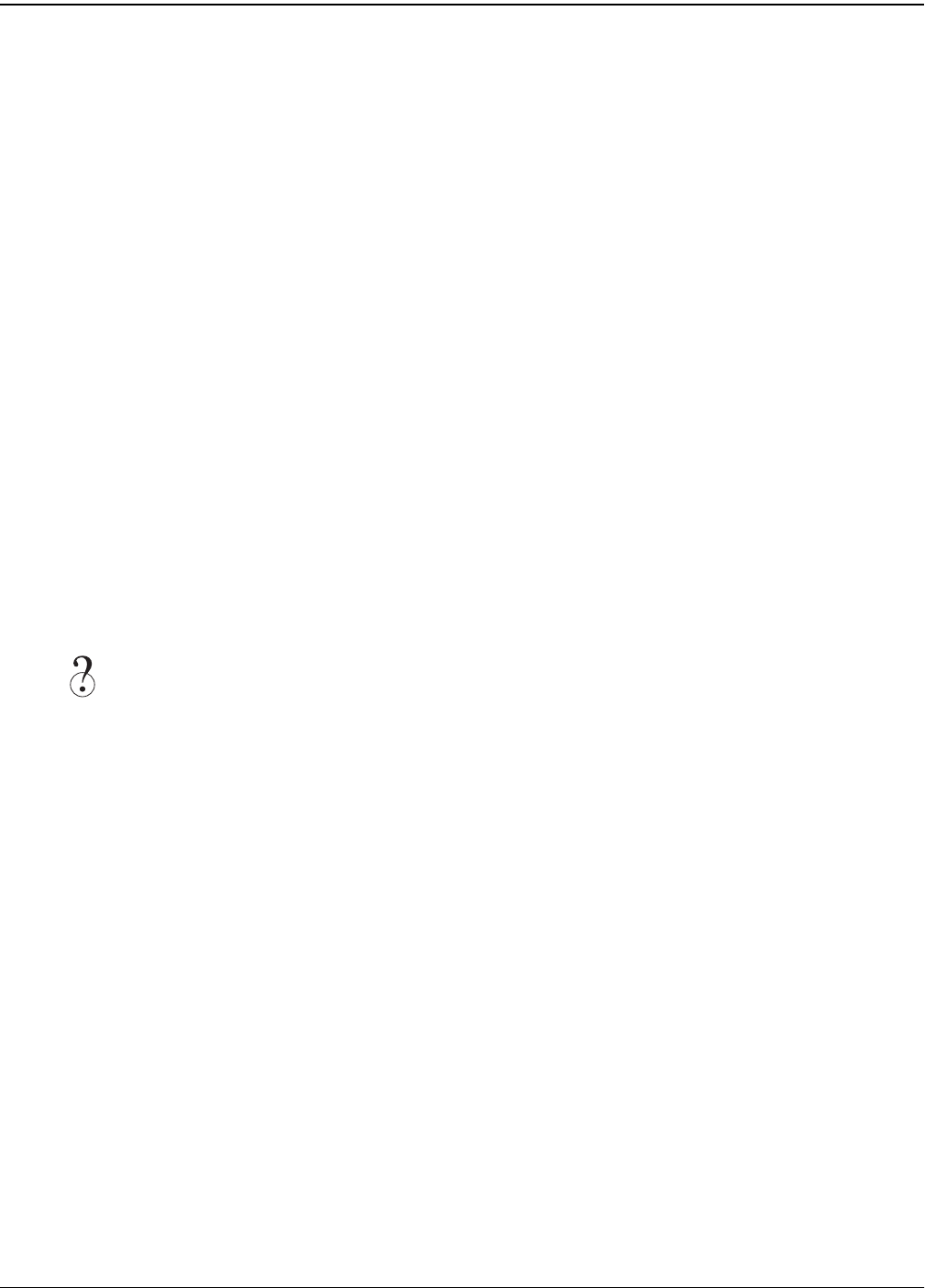
24—MIDI and Synchronization
308 www.rolandus.com Roland VS-2480 Owner’s Manual
SMPTE/MTC
The film and video industries use a steady stream of timing data called “SMPTE time
code” to keep devices tightly synchronized with each other as they play. A form of
SMPTE called “MIDI Time Code,” or “MTC” can be transmitted and received through
MIDI cables along with other MIDI data. Both SMPTE and MTC provide very accurate
synchronization. The time code area of the VS-2480’s current time location display
(Page 126) shows MTC/SMPTE hours, minutes, seconds frames and subframes.
The VS-2480 can be synchronized to any device that generates either SMPTE or MTC.
Since most VS-2480s are used with MIDI devices, MTC is used more frequently than
SMPTE. Most sequencers support MTC, for example—not as many support SMPTE.
The VS-2480 itself generates MTC.
MIDI Beat Clock
MIDI beat clock—or “MIDI Clock” for short—is a pulse embedded in a stream of MIDI
data that can be used for synchronizing MIDI devices. MIDI clock synchronization isn’t
as accurate as MTC-based synchronization. It does have one important use, however.
MIDI clock, along with MIDI Song Position Pointer (“SPP”) messages, passes along
tempo and time signature information that can be used by the VS-2480 in the creation
of sync tracks and tempo maps, which we’ll discuss in a moment.
The VS-2480 can record received MIDI clock information as a sync track that lets it act
as a master to slave devices that understand MIDI clocks and Song Position Pointer.
While the VS-2480 can generate MIDI clocks to slave devices that use this form of sync,
the VS-2480 itself can’t be synchronized to MIDI clocks, since it’s not an accurate
enough form of synchronization for the VS-2480’s precise operation.
About MTC/SMPTE Frame Rates
When you use MTC or SMPTE for synchronizing the VS-2480 with an external device,
you’ll need to make sure that the two devices are set to operate at the same MTC/
SMPTE speed, called the “frame rate.” The “frame” refers to how many frames of film or
video occur in each second.
MTC and SMPTE can run at a few different frame rates, depending on the devices
being synchronized and the materials they’re producing. It can run at:
•
30 fps (‘frames per second”)
—This speed is used by most MIDI sequencers and audio
devices. Black and white video also runs at this speed.
•
29.97N (“non-drop”) fps
—This is the speed at which United States’ NTSC format
color video runs in non-time-critical situations, such as offline production work.
•
29.97D (“drop”) fps
—This is the speed at which United States’ NTSC format live
color video runs during broadcasts and other time-critical situations.
•
25 fps
—This is the speed at which European SECAM or PAL film, video and audio
equipment operates.
•
24 fps
—Film, cell animation and certain audio devices run at this speed.
What are Non-Drop and Drop Frame Rates?
When a time counter display tries to show the frames passing by at the 29.97 fps color
video frame rate, it has a problem: The counter can’t show exactly 29.97 counter
Song Position Pointer
VS2480OMUS.book 308 ページ 2006年2月7日 火曜日 午後4時16分


















